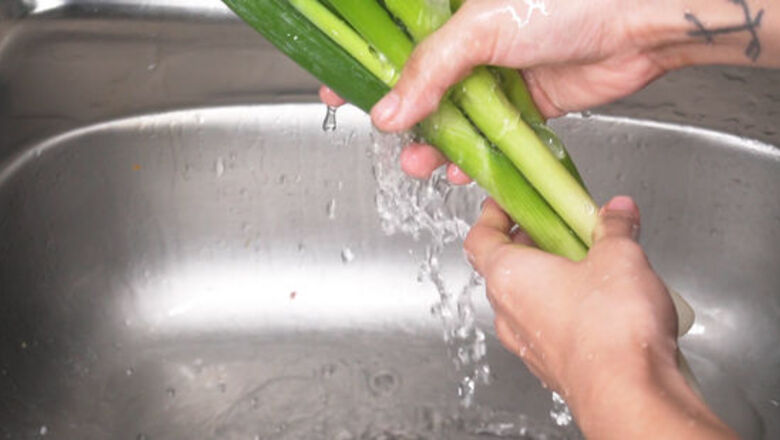
views
Slicing into Circles
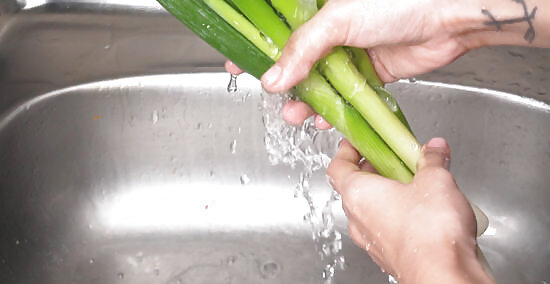
Select small, tender scallions. Rinse 3 or 4 scallions that have thin stalks and are still firm and then place them on your cutting board. In order to cut the scallions without crushing them, work in small batches if you want to prepare a lot. The greens on the end of the scallions should look healthy and rich in color.
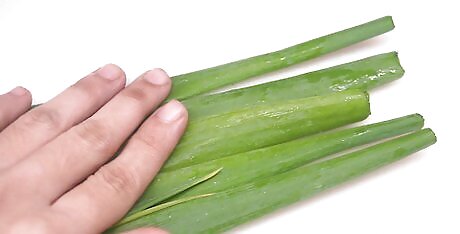
Lay the scallions in a single layer on a sturdy cutting board. To prevent your cutting board from sliding around while you're working, place it on a kitchen towel. Then place the scallions in a single layer on the board. Avoid stacking the scallions because you'll crush them instead of cut them.
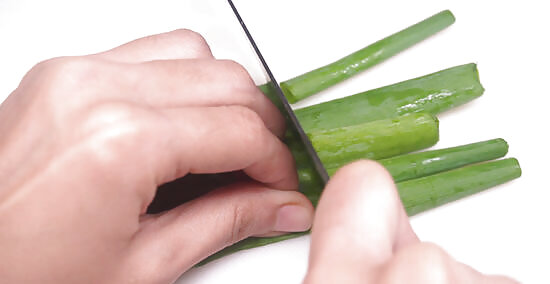
Cut off 2 in (5 cm) of the green tops and the root ends. Use a chef's knife to cut the green, hollow ends and 1/8 in (3 mm) to 1/4 in (6 mm) above the root ends off. Discard the tips and roots. You should still have green ends of the scallion, but you've just cut away the scraggly part.

Hold the scallions in place and slide the blade back and forth. Secure the scallions in place with your non-dominant hand and hold the chef's knife with the other. Decide what angle to cut the scallions and slide the blade towards you in a steady movement. Slide the knife forward and bring it back again to cut the scallions. Make the scallions as thin as you like. For example, cut them between 1/4 in and 1/2 inch (6 and 12 mm). Don't push down as you're slicing the scallions or you'll crush them. Hold the chef's knife with your middle, ring, and pinkie fingers. Your index finger should “pinch” the knife and rest flat against the blade near the handle.

Use the scallions immediately for the freshest taste. Scatter the scallions over your favorite meals to add a little color and crunch to the dish. In addition to garnishes, add the scallions to salsas, egg dishes, and salads. Use the thinnest sliced scallions for garnishes and save thicker ones for recipes where you'll be cooking them such as in baked goods or eggs.
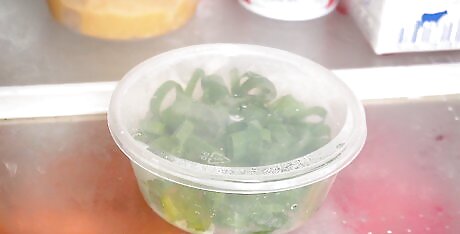
Store leftover scallions in the refrigerator. You can store chopped scallions for up to 1 day in an airtight container in the refrigerator. Keep in mind that the scallions will become limp the longer they're stored. To revive the scallions, soak them in ice water for about 30 minutes before using them.
Making Long Strips
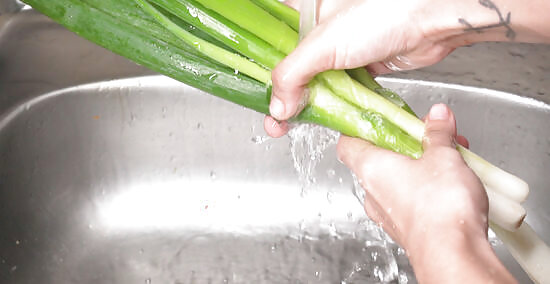
Lay 2 to 3 scallions in a single layer. Rinse the scallions and place them on your cutting board so they're next to each other in a single layer. Don't stack the scallions or you'll crush them when you cut. If you need to cut lots of scallions into long strips, work in batches instead of trying to cut them all at once.
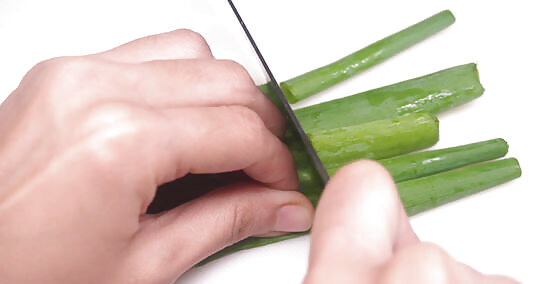
Cut off and discard the top 2 in (5 cm) of green tops. Since you want the delicate flavor and texture of the lower part of the scallion, cut off the top part of the scallions. You can discard the dark green tops or save them for another use.

Hold the knife almost parallel to the scallions. Steady the scallions with your non-dominant hand and hold a chef's knife in the other. Instead of placing the knife across the scallions at a 90-degree angle, hold the knife so it's almost parallel to the scallions. Making such an extreme angle will make very long, thin strips of scallions.
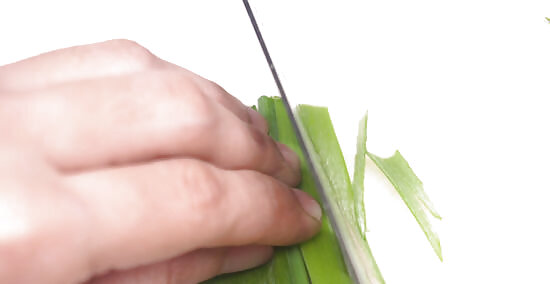
Slide the knife across the scallions to slice them. Pull the blade towards you in a smooth movement so the scallions are sliced into thin strips. Don't push the blade down or you'll crush the scallions instead of cutting them. Continue slicing almost parallel to the scallions until you've cut across all of them.
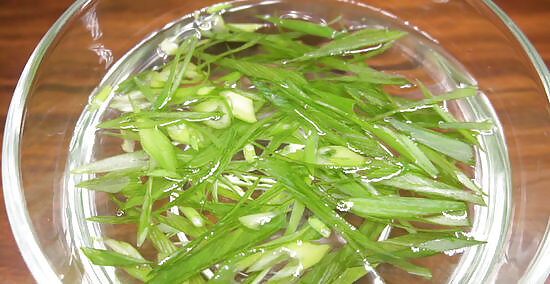
Soak the thin scallions in ice water for at least 30 minutes. Fill a container with ice water and place the thin scallions directly into it. Put them in the refrigerator so they absorb some of the liquid. It's important to do this because the scallions will crisp up after 30 minutes. You can refrigerate the sliced scallions in ice water for up to overnight.
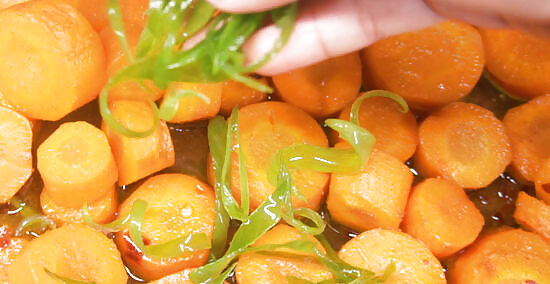
Garnish with the thin strips of scallions. When you're ready to use the long scallions, remove the bowl of ice water from the refrigerator. Scoop out the scallions and place them in a bowl of ramen or noodle soup. They also make a great garnish for steaks or chops. Add the garnish just before you're ready to serve it because the heat may wilt the scallions a little.
Chopping Large Pieces
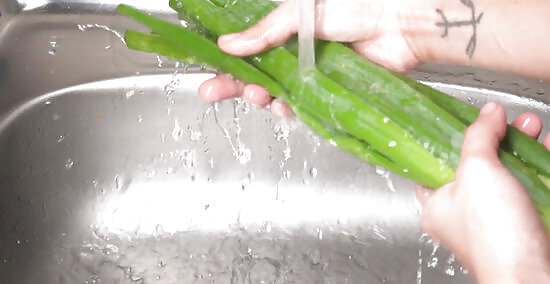
Cut away the roots and hollow ends of the scallions. Rinse the scallions and place them on your cutting board. Use a sharp knife to cut 18 to 1/4 in (3 to 6 mm) above the roots and discard them. You'll also need to cut 2 in (5 cm) from the end with the hollow green tops and discard them. If the hollow green ends look fresh, you can save them to chop for a garnish.
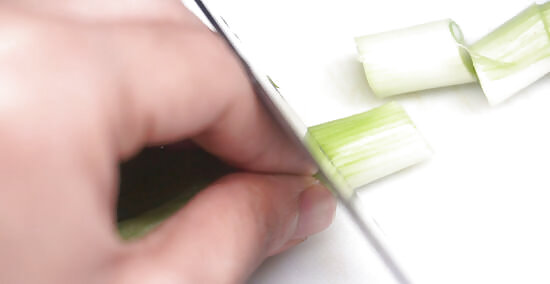
Use a chef's knife to cut 1 in (2.5 cm) pieces. To keep most of the scallions intact, make sharp cuts across the scallions at 1 in (2.5 cm) intervals. Avoid chopping into the dark green ends of the scallion since these should be cut much finer. For a unique look, point the knife at a 45-degree angle when you cut the pieces. This will give you large diagonally-sliced scallions.

Cook large pieces of scallions. Since the long pieces of scallions have a rich onion flavor, add them to your favorite stir-fry. Try braising a dish of scallions along with vegetables or spear them on a skewer and toss them on the grill. For extra-crunchy scallions, coat them in batter and fry them like onion rings.
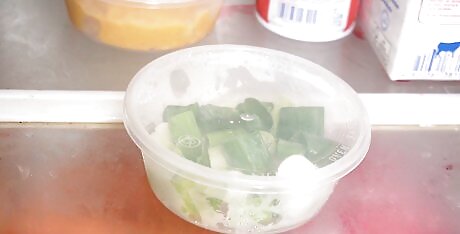
Store the leftover pieces of scallions. If you have extra 1 in (2.5 cm) pieces of scallions, transfer them to an airtight container and refrigerate them for up to 1 day. Keep in mind that the longer the scallions are stored, the softer they'll become. If the scallions become limp, put them in a bowl of ice water for 30 minutes so they crisp up.



















Comments
0 comment